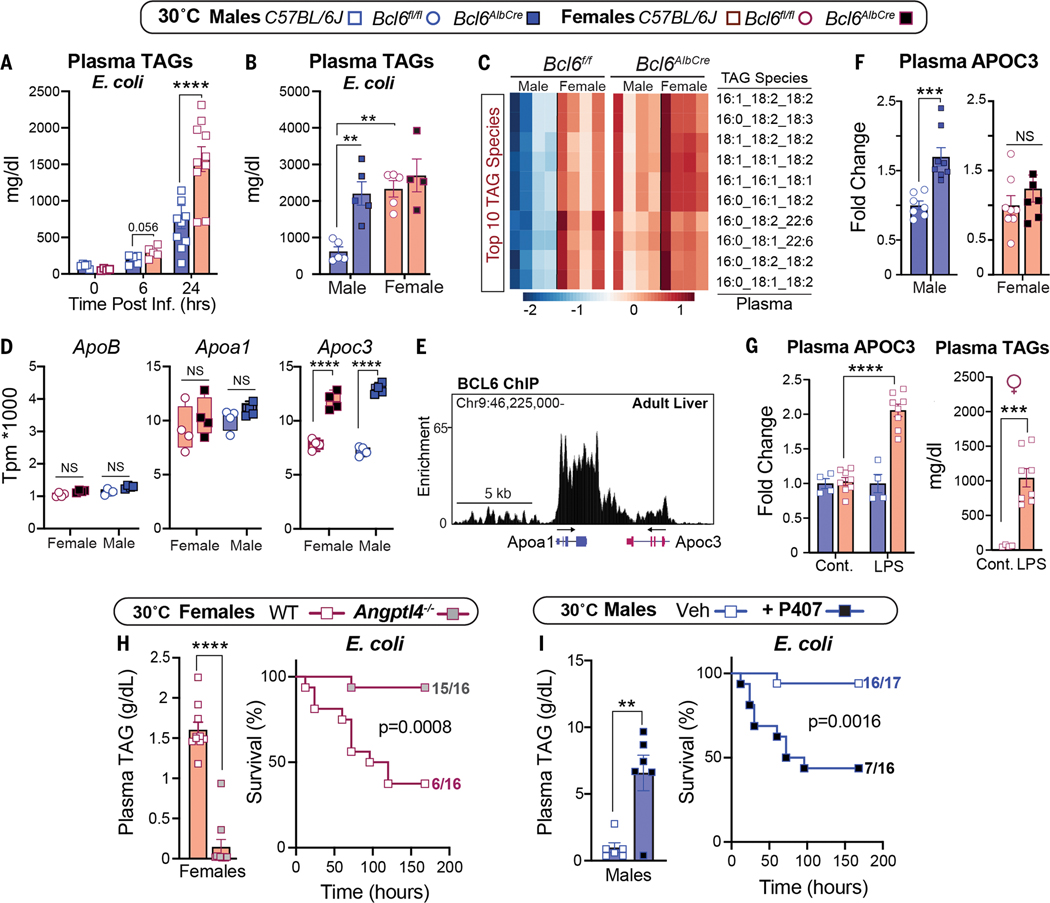Figure 3.
Sex-dependent hyperlipidemia is linked to host defense responses. (A and B) Plasma TAGs of (A) wild-type mice over time and (B) Bcl6f/f and Bcl6AlbCre mice that were infected with E. coli (1 × 107 CFU) at 30°C. (C) Top 10 most abundant TAG species measured by lipidomics in infected Bcl6f/f and Bcl6AlbCre mice. Scale bar, Z-scores. (D) Transcript abundances of hepatic ApoB, Apoa1, and Apoc3 in Bcl6f/f and Bcl6AlbCre mice (RNA-seq) at 30°C. TPM, transcripts per million. (E) Genomic binding of BCL6 in Apoc3/Apoa1 locus in the male liver (ChIP-seq) at 22°C. (F) Plasma APOC3 in Bcl6f/f and Bcl6AlbCre mice that were housed at 30°C. (G) Plasma APOC3 and TAGs in control and LPS-treated (0.5 mg/kg) C57BL/6J female mice at 30°C. Cont., control. (H) Plasma TAGs (1 × 107 CFU) and survival curves (1 × 108 CFU) of female mice that were infected with E. coli at 30°C. (I) Plasma TAGs (1 × 107 CFU) and survival curves (1 × 108 CFU) of male mice that were infected with E. coli at 30°C. Data are presented as mean ± SEM. **p < 0.01; ***p < 0.001; ****p < 0.0001.

